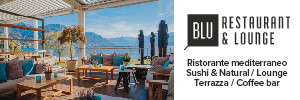Locarno's historic centre
Cities & Monuments
Locarno's Piazza Grande is the heart of the city distinguished by a 700 meter-long succession of harmonious porticos built in the Lombard architectural style and hosting numerous businesses and restaurants. Old palaces face this street view that is particularly animated in the summer during the musical show "Moon & Stars" and the International Film Festival. Piazza Grande is the point of departure to visit the historic centre's important sites, like the Visconti Castle, the numerous churches of the Città Vecchia (old city), the lakefront and the church of San Vittore in Muralto, a remarkable Romanesque-style building..
Itinerary: Locarno's Historic Centre (2h, see map)
Piazza Grande was built in the 700s thanks to the retraction of the lakefront that in ancient times brushed the houses. The typical pavement of river cobblestones dates from 1825.
Start the walk by crossing the entire square to the Visconti Castle. Of ancient origins, it was conquered by the Visconti family of Milan in 1342 and later enlarged. In 1532, after the victory of the Confederates against the Milanese, it was for the most part demolished and from the existing five towers, only one was salvaged. The castle is home of the Archaeological Museum with a remarkable collection of Roman glass found in excavations in the region, including the famous "bird chalice".
Past the church you should go up the stairway along the western side of the castle that leads to the Città Vecchia. Once you reach the top, walk along the Ripa Canova to the widening where, on the left, is located the church of San Francesco (Saint Francis) close to the namesake convent. The church's current building, although traditionally known to be from 1316, was built in 1583 with stones from the part of the castle destroyed by the Confederates. The interior of the triple-aisled church, with precious frescoes, was restored between 2009 and 2012. San Francesco hosts numerous Classical music concerts during the prestigious Settimane Musicali di Ascona (Ascona Music Weeks). The adjacent convent of the Friars Minor was transformed into a school at the end of the 1800s.
From the church of San Francesco go back to the little square and enter the Via dell'Ospedale. At the entrance of the hospital stands a large bronze sculpture, masterpiece of artist Nag Arnoldi. Turn left in Via Castelrotto that runs along the hospital's modern building and walk to the end of the street. Leading to the main road (Via Rinaldo Simen), turn right and then left on Via Vallemaggia.
After a few meters, take the Via S. Maria in Selva on the left where a large gate, also on your left, gives access to the namesake church located in the city's cemetery. Inside the church you can admire precious frescoes from different authors. The most outstanding, from 1401, are works of a not-better-specified "Master of Saint Mary" and are considered between the best examples of the international Gothic style in Lombard territory. Located in the central part of the oriental lunette are representations of "Our Lady of Clemency" (above) and the "Coronation of the Virgin" and groups of Saints, Martyrs and Prophets, located in the ribs of the vault. Other frescoes are works of Giacobino da Vitale (The Virgin's Funeral - 1450), the Seregnesi workshop (subjects of votive character) and the Antonio da Tradate workshop (Presentation at the Temple).
When you exit the church, go back to Via Vallemaggia and turn left. Walk all the way to Piazza S. Antonio where the Baron Marcacci (1856) monument stands erect at the centre. On the square are the namesake church, partially rebuilt in the 19th century, and the Casa Rusca, a noble 17th century house and headquarter of the Pinacoteca comunale (Communal Art Gallery). After crossing the square, take the narrow Via S. Antonio that between antiques and handicrafts stores leads to the Piazzetta delle Corporazioni and then turn left in Via Cittadella, the central artery of the Città Vecchia. Located here is the church of Santa Maria Assunta (Saint Mary Assunta) - also called the Chiesa Nuova (New Church). Built around 1630, a stucco sculpture representing San Cristoforo (Saint Christopher) decorates the facade. The interior presents one of the most sumptuous Baroque stucco decorations in Ticino.
Proceeding along Via Cittadella, at the intersection with Via Panigari you can descend onto Piazza Grande. If you turn right, you will walk through the porticos to Via Ramogna and, beyond, to the train station behind which you can see the Romanesque church San Vittore, that is considered one of the most important ones in Ticino.
The San Vittore church
The current building dates back to 1100 but its bell tower is from the 500s. It is well-known thanks to the frescoes in the central aisle representing scenes from the Genesis: from the Expulsion from Paradise to the Curse of Cain. The paintings, that are better observed with binoculars, are unique for the choice of themes, forms and colors. They unravel along a strip about 2 meters wide and around 20 in length. Dating from around 1140-1150, they are some of Ticino's oldest. Of great value are the 22 capitals of the columns that sustain the crypt, decorated with a succession of geometric and plant motifs, human heads and fantastic animals forming an extraordinary collection of Romanesque sculptures.
Behind the collegiate church, on the right you can enter Via San Vittore that descends to the lake. At the end of the bridge above the railway, go down the stairway and under an archway where, just across the way, you will enter the charming Vicolo dei Nessi that leads to the Muralto lakefront.
Guided Tours
Tours with audio guides and original guided tours to discover the historic centre and other characteristics of the town. For information and reservation please contact Touris Office Locarno (tel. +41 (0)848 091 091 - info@ascona-locarno.com)
Restaurants nearby
-

0.1 km
-

0.2 km
-

0.2 km

 Back to the list
Back to the list






